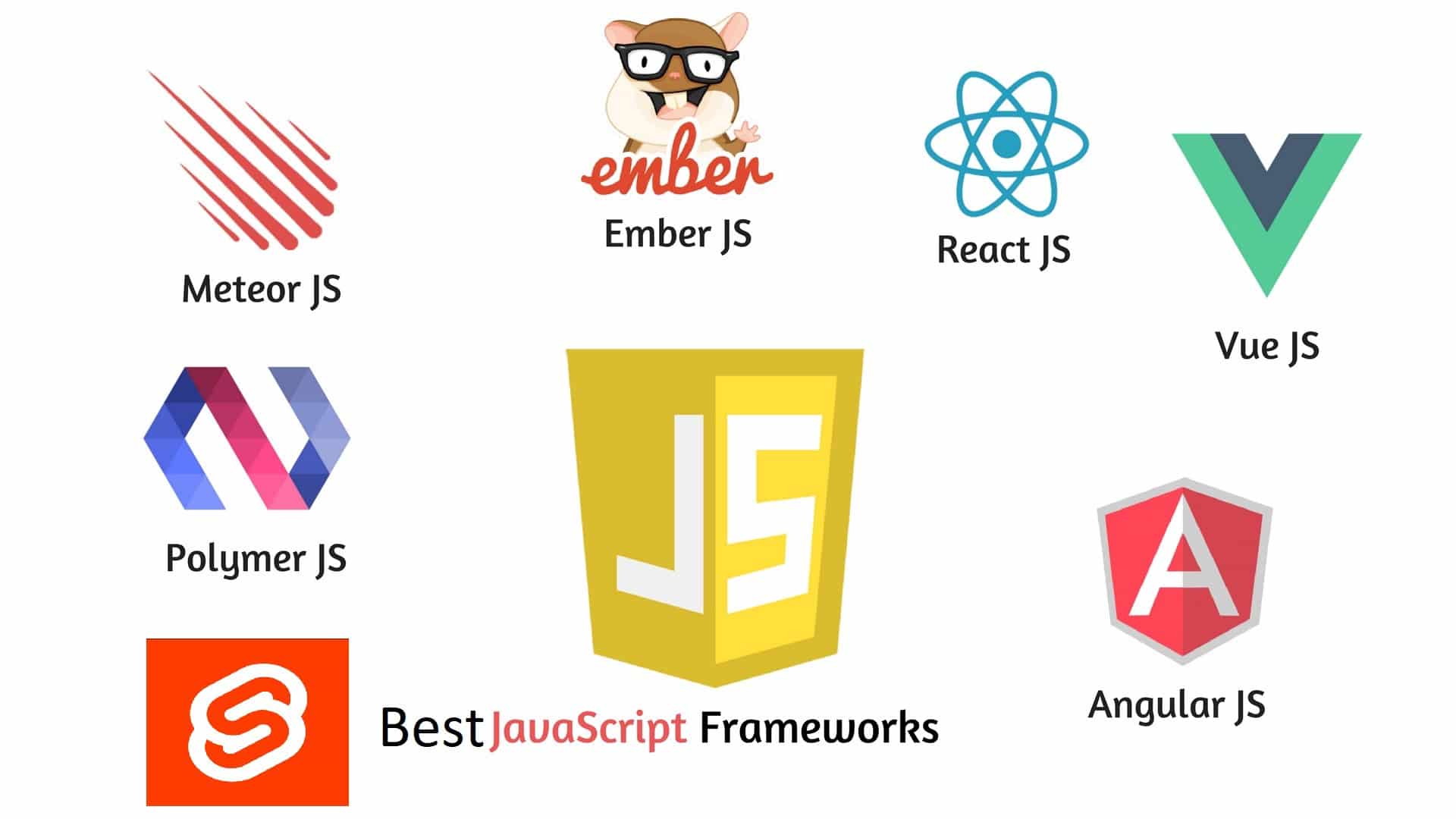Numerous programming languages have evolved and used by developers worldwide but JavaScript has made an unimaginable impact on web development. Several JavaScript frameworks have been invented and each has a different purpose, usage, and benefits. JavaScript frameworks have become a popular and integral part of front-end and web application development. Developer communities and organizations building impressive web applications using AngularJS, React, Vue.JS and Node.JS and other frameworks.
Being one the top web development company in USA by Digital, we have done deep research and made a curated list of top JavaScript frameworks for 2020. These are majorly used for frontend, backend, and testing.
Frontend Used in Building Frontend of Applications
1. AngularJS
AngularJS is the world’s most popular JavaScript framework. It is an efficient, powerful and open-source framework since it is supported by Google. AngularJS is highly used in building single-page applications. It’s actually an extension of HTML because it extends the HTML vocabulary by dynamic views in web applications. AngularJS interprets the attributes to perform data binding. The latest version of Angular 2+ has been revealed in Angular Connect 2019 with some key updates and Angular Ivy compiler to reduce the size of the applications. With Angular Universal, you can develop server-side apps with AngularJS.
Usage:
- Build highly interactive single-page applications with Angular JS.
Advantages:
- AngularJS is a standalone efficient framework that is advanced and modular. Now you can install separate modules and no need to insert a link to the AngularJS library in the HTML file.
- Enough flexible because Angular 2+ has component-based architecture instead of MVC architecture.
- You can use both TypeScript and CoffeeScript. The new update of Angular 2+
2. Highly Rated and Known – React
ReactJS is a declarative JavaScript library that is used in building the interactive user interface of the web applications. ReactJS has caught up with AngularJS in the last 5 years. If you want to create and use reusable user interface components in the applications, ReactJS can accomplish your objective. ReactJS has one specialty which is data rendering and automatically updated without reloading the whole page.
Usage
- ReactJS is technically not a framework. It is mainly in mobile and web apps to handle the view layer in the MVC model.
- Also, it can be used to build virtual DOM. You can easily integrate DOM in any application.
- Build large scale web applications with ReactJS.
Advantages:
- ReactJS uses a reactive approach and also has its own unique concepts in creating logics for frontend development.
- You can use React with JQuery, AJAX, Superagent, Axios and Fetch APIs.
3. Vue.JS
Vue.JS was invented in 2016 and it offers salient features. Vue.JS has several common concepts and features of React and AngularJS leading frameworks. Vue.JS has been downloaded more than 40 million times. It also works like React and all you need to save in one file: component logic, layout, and stylesheet.
Usage:
- Developing high-end single-page applications.
- Reliable platform in building cross-platform applications.
Advantages:
- Duel integration mode
- It has a dedicated library for application management.
- With Nuxt.JS and Vue.JS, you can create server-side applications.
- Fluent workflow, less complicated than React and Angular.
4. Ember.JS
Ember.JS is a progressive JavaScript Framework. Ember.JS has been used in wide application development areas and it is suitable for client-side development. It supports data binding and is fully capable of handling user interfaces of heavy applications. This framework is much similar to AngularJS and Backbone.JS. Ember 3.1.3 is the latest version of intricate architecture. Ember architecture defines components, controllers, adapters, models, routes, and templates. These comprehensive architectures allow you to build complex web applications using Ember.JS. LinkedIn, Nordstrom, Netflix are some examples of established organizations who uses Ember.JS.
Usage:
- It is useful in building component-based applications similar to AngularJS, ReactJS, and Vue.JS.
- Build large client-side applications.
Advantages:
- Ember CLI is very efficient and developers can build applications on time with it.
- Quick prototyping with Ember CLI.
- Ready Setup: It automatically creates components, controllers and project files which saves developer time.
Also Read: Angular Vs React: Which One to Choose for your Next Project
Frameworks Used in Building Backend of Applications
1. Node.JS
Node.JS is an open-source JavaScript runtime environment. This framework is highly efficient and is used in building server-side applications. Node.JS has event-driven architectures and it is fully capable of driving asynchronous input/output. Threading, package, loop formation in Node.JS is very similar to Java.
Usage:
- Node.JS is designed to build highly scalable networking applications.
Advantages:
- Lightweight and efficient
- Perfect for data-intensive real-time applications that run across distributed devices.
- Get access to a rich library of various JavaScript modules
- Node.JS libraries simplify the development of web applications using Node.js.
2. BackBone.JS
Backbone.JS was built using a RESTful JSON interface. Backbone is popular and easy to learn if you want to start with it. It is also used to build single-page applications and you can do all server-side functions easily. Backbone.JS allows you to implement complex functionalities by putting less effort and code since it is based on the Model View Presenter (MVP) pattern. Chaplin, Marionette, Handlebars are some tools, you can use with Backbone.JS. You can use a comprehensive library of events, models, collections, views, and router of Backbone.JS and build interactive web applications.
Usage:
- The backbone can be used in building single-page applications.
Advantages:
- It gives a well-organised structure to web applications.
- It supports REST API so you can synchronize your frontend and backend both.
- It is better if you have different types of users.
- You can create highly reusable models, events and views so you can create more elegant solutions.
- Easily connect with your existing APIs.
- Lightweight.
3. Express.JS
Express.JS is also an open-source framework used in backend development. It is the Node.JS web application framework. You can build beautiful server-side web applications and APIs using Express.JS. Express.JS is loved by the worldwide developer community since it is simple, flexible and scalable. It is mostly used alongside the Angular or React in forming the server-side framework layer in MEAN Full Stack Development technology. There is a large acceptance of Express.JS and around 100k websites are built using Express.JS in the world.
Usage
- You can build robust and scalable MEAN Stack applications because Express is a backend component of MEAN
- You can create APIs.
Advantages:
- You can implement a robust set of features in mobile and web applications using Express.JS.
- Create APIs
- Many popular frameworks are based on Express.JS so if you know this, you can use others as well.
- Reusability of code.
4. Meteor
Meteor is another open-source JavaScript framework that is developed for backend development. Meteor is based on Node.JS and you can use it for cross-platform mobile and web application development. Meteor is also used along with Frontend libraries like AngularJS and React. Meteor has a real-time testing tool named Velocity. You can integrate Velocity testing tools with other JavaScript frameworks like Mocha, Jest, and Jasmine.
Usage:
- You can build robust native cross-platform mobile apps for iOS and Android. You just need to integrate Cordova with Meteor.
- Used in both client-side and server-side development.
Advantages:
- It has extensive libraries and packages
- Speed up the development process with enhancing functionalities.
- Meteor supports the MongoDB database which is helpful in building data-driven applications.

 App Development
App Development Web Engineering
Web Engineering AI Services
AI Services Startups
Startups Health / Fitness
Health / Fitness Education
Education Social
Social Nonprofit
Nonprofit Fintech
Fintech Logistics
Logistics Government
Government HR Software
HR Software About Simpalm
About Simpalm Our News
Our News Client Testimonials
Client Testimonials Careers
Careers Awards
Awards Resources
Resources Information
Information


